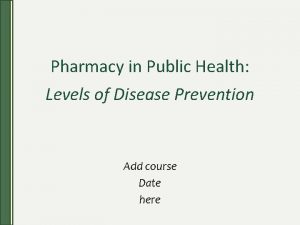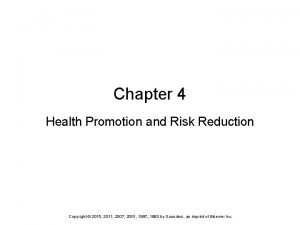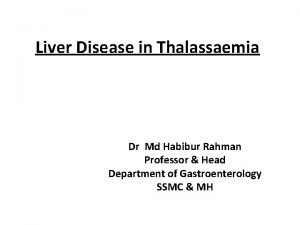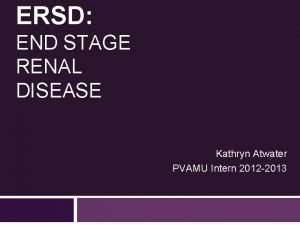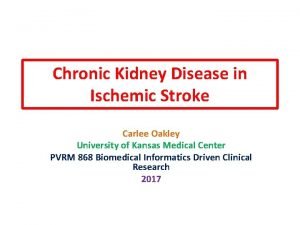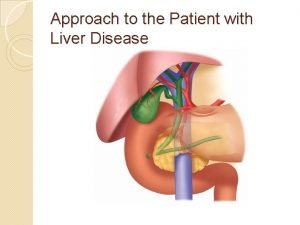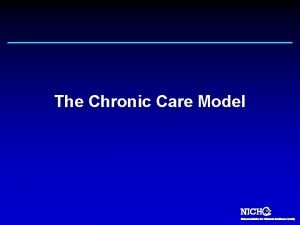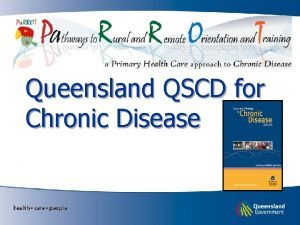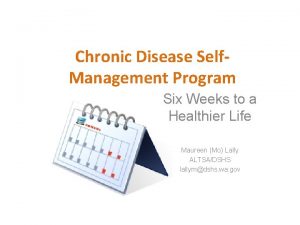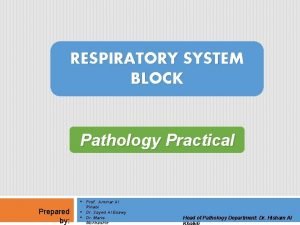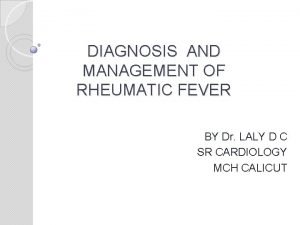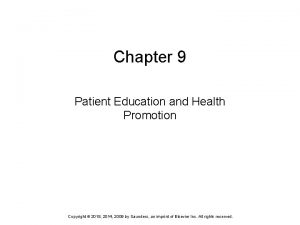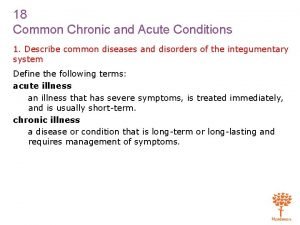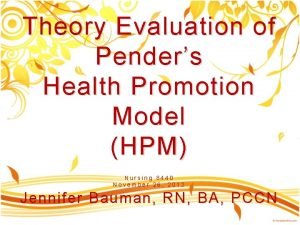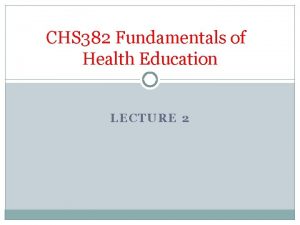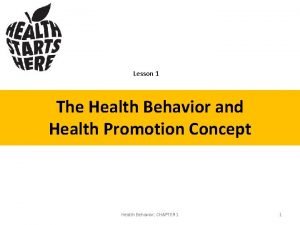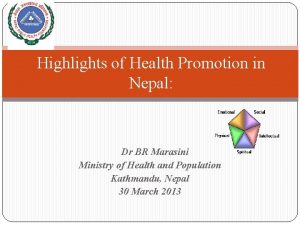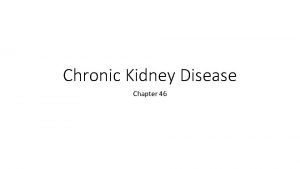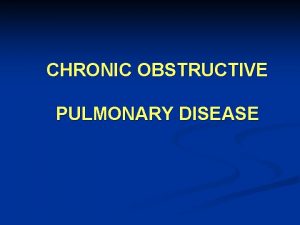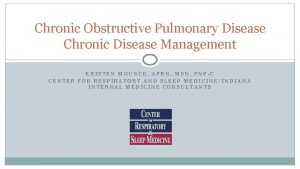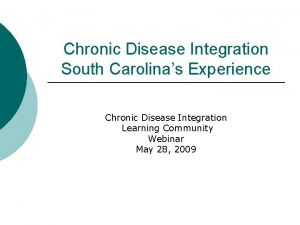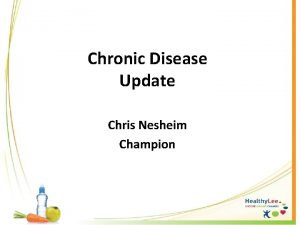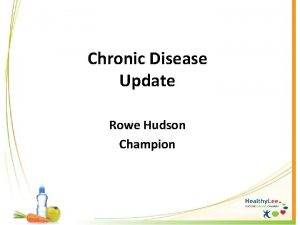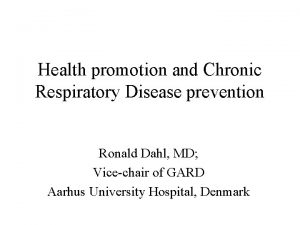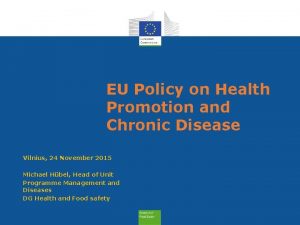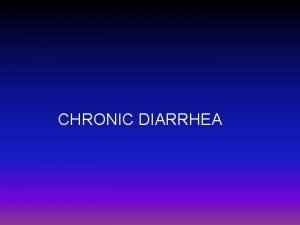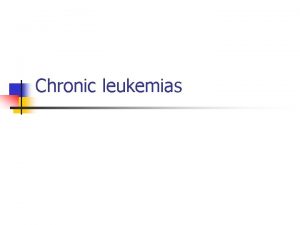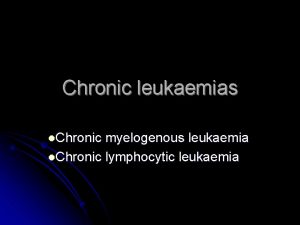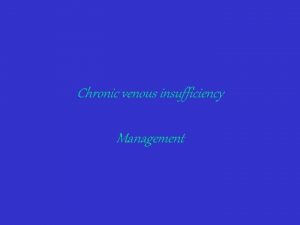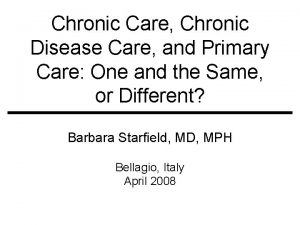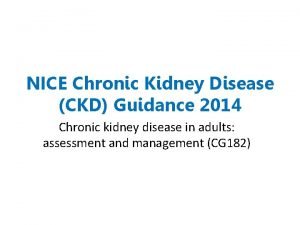Health Promotion and Chronic Disease Promotion 5 year




















































- Slides: 52

Health Promotion and Chronic Disease Promotion: 5 -year strategic plan update Karen Girard, Section Manager Health Promotion and Chronic Disease Prevention CLHO Healthy Communities Meeting October 1, 2015

Presentation outline • Overview of HPCDP and Healthy Communities frameworks • Current funding sources and budget • 5 -Year Strategic Plan (2012 -2017) overview • Strategy highlights and progress towards meeting our goals – – Tobacco use Obesity Heart disease and stroke Colorectal cancer

HPCDP framework HPCDP Vision 2020: All people in Oregon live, work, play and learn in communities that support health and optimal quality of life. HPCDP mission: To serve all people in Oregon by advancing policies, environments and systems that promote health, and prevent and manage chronic diseases.

Health Promotion Chronic Disease Prevention framework § Allows state, local and tribal governments to collaborate with community partners to put health within reach of all people in Oregon. § Promotes chronic disease prevention, early detection and selfmanagement § Provides a public health approach of “programmatic and policyinterventions to influence social norms, systems, networks. ”

Healthy Communities framework • Data driven health outcomes • Evidence-based interventions – using what works • policy, systems and environmental approaches create conditions that support healthy behaviors • Address health equity • Strategic partners • Strategic plan to address prevention, early detection and self-management


Leading cause of death U. S. versus Oregon. 2005

44% 56%

HPCDP 5 -year strategic plan overview - objectives By June 30, 2017 Tobacco health outcome: Reduce smoking prevalence in youth and adults Obesity health outcome: Lower the prevalence of obesity among Oregon youth and adults Heart disease and stroke health outcome: Reduce the rate of heart attack hospitalization among Oregon adults ages 74 and younger by 12 percent Colorectal cancer health outcome: Reduce the rate of late stage colorectal cancer diagnoses by 15 percent

Reduce smoking prevalence in youth and adults KEY STRATEGY HIGHLIGHTS AND PROGRESS

Tobacco highlights Tobacco Prevention Campaign v Print ads v Television v Hero Videos v Billboards

Tobacco highlights • Passage of HB 2546 – Includes electronic cigarettes and other vaping devices in Oregon’s Indoor Clean Air Act (ICAA) • This portion becomes law January 1, 2016 – Bans the sale of vaporizers, nicotine liquid and other accessories to minors • This portion became law as soon as Governor signed • Inclusion of tobacco use prevalence as a CCO metric

Cigarette consumption per capita in Oregon has decreased by 55% since the start of TPEP in 1996

Cigarette consumption per capita in Oregon has decreased by 55% since the start of TPEP in 1996 2. 6 billion fewer cigarettes were sold in 2014 than in 1996




In 2015, 8 th grade cigarette smoking remained at 4%



In 2015, 11 th grade cigarette smoking decreased to 9%

Lower the prevalence of obesity among Oregon youth and adults KEY STRATEGY HIGHLIGHTS AND PROGRESS

Obesity highlights • Healthy Communities Grantees focus on local obesity prevention efforts – Worksite wellness – Hospital nutrition standards – Active transportation • Cross-Agency Health Improvement Project (CAHIP) – Healthier worksites for OHA and DHS employees and clients/consumers

Obesity highlights • Joint School Wellness Policy Coordinator position between OHA-PHD and ODE-Child Nutrition Programs – Develop and implement Oregon model school district wellness policies focused on nutrition and physical activity • Collaboration with OHA-PHD’s MCH Program to address childhood obesity in early care and education


Goal: Slow the rise of obesity among adults to less than 30% by 2017

Goal: Slow the rise of obesity among adults to less than 30% by 2017 27% 2010 baseline

Goal: Slow the rise of obesity among adults to less than 30% by 2017 27% 2010 baseline 27% 2013 current

Goal: Slow the rise of obesity among adults to less than 30% by 2017 27% 2010 baseline 27% 2013 current Obesity among adults in Oregon has remained stable since 2010


Goal: Lower obesity among 8 th graders to less than 11% by 2017

Goal: Lower obesity among 8 th graders to less than 11% by 2017 11% 2009 baseline 10% 2013 current

Goal: Lower obesity among 8 th graders to less than 11% by 2017 11% 2009 baseline 10% 2013 current Goal: Lower obesity among 11 th graders to less than 10% by 2017

Goal: Lower obesity among 8 th graders to less than 11% by 2017 11% 2009 baseline 10% 2013 current Goal: Lower obesity among 11 th graders to less than 10% by 2017 10% 2009 baseline 11% 2013 current

Reduce the rate of heart attack hospitalization among Oregon adults ages 74 and younger by 12 percent KEY STRATEGY HIGHLIGHTS AND PROGRESS

Heart disease and stroke highlights • Sustainable Relationships for Community Health (SRCH) – Advance health systems interventions – Promote community clinical linkages – SRCH Grantees: • All. Care CCO • Inter. Community Health Network • Clackamas County Public Health • Deschutes County Health Services • Lane County Health and Human Services

Heart disease and stroke highlights • Sodium Reduction in Community Programs (SRCP) – Develop and implement comprehensive, evidence‐based nutrition standards including sodium in large worksites • Government vending – Benton and Jackson Counties • Hospital cafeterias – Lane and Linn Counties


Goal: The rate of heart attack hospitalization among Oregon adults ages 74 or younger will be reduced by 12 percent

Goal: The rate of heart attack hospitalization among Oregon adults ages 74 or younger will be reduced by 12 percent 135 per 100, 000 2010 baseline

Goal: The rate of heart attack hospitalization among Oregon adults ages 74 or younger will be reduced by 12 percent 135 per 100, 000 2010 baseline 143 per 100, 000 2014 current

Goal: The rate of heart attack hospitalization among Oregon adults ages 74 or younger will be reduced by 12 percent 135 per 100, 000 2010 baseline 143 per 100, 000 2014 current Heart attack hospitalizations need to decrease by 17% to meet our 2017 goal (119 per 100, 000)

Reduce the rate of late stage colorectal cancer diagnoses by 15 percent KEY STRATEGY HIGHLIGHTS AND PROGRESS

Promoting colorectal cancer (CRC) screening • Social media campaign – The Cancer You Can Prevent • Local spokespersons • Messages and materials • 2015 priority to promote screening of Oregon’s Latino population, which has the lowest screening prevalence (21%)

Actions to increase CRC screening • 2014 and 2015 Oregon legislation to remove cost barriers to CRC screening • Oregon’s Coordinated Care Organizations CRC incentive measure • Inter. Community Health Network CCO grants to Linn, Benton and Lincoln counties to promote CRC screening • OHA-PHD grant to promote best practices with health systems


Goal: Reduce late stage colorectal cancer incidence 15 percent by year 2017

Goal: Reduce late stage colorectal cancer incidence 15 percent by year 2017 68 per 100, 000 population 2009 baseline

Goal: Reduce late stage colorectal cancer incidence 15 percent by year 2017 68 per 100, 000 population 2009 baseline 58. 8 2012 current

Goal: Reduce late stage colorectal cancer incidence 15 percent by year 2017 68 per 100, 000 population 2009 baseline 58. 8 2012 current 57. 8 2017 goal

Goal: Reduce late stage colorectal cancer incidence 15 percent by year 2017 68 per 100, 000 population 2009 baseline 58. 8 2012 current 57. 8 2017 goal We only need a decline of 1. 5 percentage points over the next five years to achieve our goal

Questions
 Health promotion and levels of disease prevention
Health promotion and levels of disease prevention Health promotion and levels of disease prevention
Health promotion and levels of disease prevention Chronic granulomatous disease
Chronic granulomatous disease Stigmata of chronic liver disease
Stigmata of chronic liver disease Jewish chronic disease study
Jewish chronic disease study Chronic kidney disease near atwater
Chronic kidney disease near atwater Features of cld
Features of cld Carlee oakley
Carlee oakley Stigmata of chronic liver disease
Stigmata of chronic liver disease Nonalcoholic fatty liver disease
Nonalcoholic fatty liver disease Kate lorig stanford
Kate lorig stanford Wagner chronic care model
Wagner chronic care model Chronic disease
Chronic disease Nursing care plan for liver cirrhosis
Nursing care plan for liver cirrhosis Chronic disease
Chronic disease Emphysème
Emphysème Chronic rheumatic heart disease
Chronic rheumatic heart disease Difference between health education and counselling
Difference between health education and counselling Bharathi viswanathan
Bharathi viswanathan Health promotion and maintenance
Health promotion and maintenance University of central florida health care administration
University of central florida health care administration Flinders model
Flinders model Romanticism disease
Romanticism disease The human body in health and disease chapter 2 answer key
The human body in health and disease chapter 2 answer key Concept of health
Concept of health Introduction to community medicine
Introduction to community medicine The human body in health and disease chapter 2 answer key
The human body in health and disease chapter 2 answer key Chapter 2 the human body in health and disease
Chapter 2 the human body in health and disease Conclusion of health and disease
Conclusion of health and disease Conclusion of health and disease
Conclusion of health and disease Poem about leaving school
Poem about leaving school Approaches to health promotion
Approaches to health promotion Patient readiness to learn
Patient readiness to learn Caplan and holland model of health promotion
Caplan and holland model of health promotion Differences between acute and chronic inflammation
Differences between acute and chronic inflammation Chapter 18 common chronic and acute conditions
Chapter 18 common chronic and acute conditions Morphological types of inflammation
Morphological types of inflammation Leukemia death rate
Leukemia death rate Acute and chronic apical periodontitis
Acute and chronic apical periodontitis Health and social care component 3 health and wellbeing
Health and social care component 3 health and wellbeing Health promotion adalah
Health promotion adalah Nola pender metaparadigma
Nola pender metaparadigma Health promotion approach
Health promotion approach Pender's health promotion model
Pender's health promotion model Professional nursing practice: concepts and perspectives
Professional nursing practice: concepts and perspectives Nola pender health promotion model articles
Nola pender health promotion model articles Health promotion emblem
Health promotion emblem Ethical issues in health promotion
Ethical issues in health promotion Health promotion program in malaysia
Health promotion program in malaysia Who health promotion glossary
Who health promotion glossary Ottawa charter of health promotion
Ottawa charter of health promotion Define health promotion
Define health promotion Health promotion strategies
Health promotion strategies
